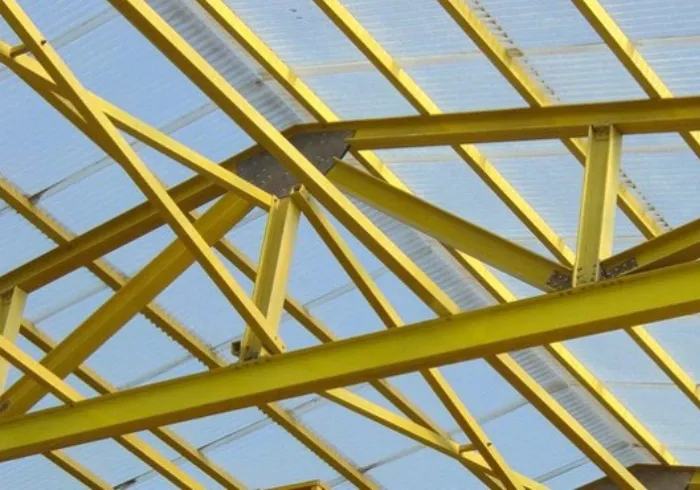loading...
- No. 9, Xingyuan South Street, Dongwaihuan Road, Zaoqiang County, Hengshui, Hebei, China
- admin@zjcomposites.com
- +86 15097380338
- Welcome to visit our website!
Exploring the Advantages of Structural FRP Fiberglass in Modern Engineering Applications
The Benefits and Applications of Structural FRP Fiberglass in Modern Engineering
In the realm of modern engineering and construction, the quest for materials that combine strength, durability, and lightweight properties has led to the increasing adoption of fiber-reinforced polymer (FRP) composites. Among these, structural fiberglass, commonly known as FRP fiberglass, has emerged as a versatile and effective solution for various applications. This article delves into the properties, benefits, and applications of structural FRP fiberglass, highlighting its importance in contemporary infrastructure projects.
Understanding FRP Fiberglass
FRP fiberglass is composed of a polymer matrix reinforced with glass fibers, creating a composite material that boasts superior mechanical properties. The glass fibers provide strength and stiffness, while the polymer matrix offers protection against environmental factors such as moisture, chemicals, and UV radiation. This unique combination results in a material that is not only lightweight but also exceptionally strong and resistant to corrosion—making it an ideal choice for a wide range of structural applications.
Key Benefits of Structural FRP Fiberglass
1. Corrosion Resistance One of the most significant advantages of FRP fiberglass is its resistance to corrosion. Unlike traditional materials such as steel, which can succumb to rust and degradation over time, FRP fiberglass retains its integrity even in harsh environments. This characteristic makes it particularly suitable for use in chemical plants, marine applications, and infrastructure exposed to moisture.
2. Lightweight The lightweight nature of FRP fiberglass is a game-changer in construction and engineering. Its reduced weight simplifies handling, transportation, and installation processes, leading to lower labor costs and quicker project timelines. This is particularly beneficial for large structures where weight considerations are critical.
3. High Strength-to-Weight Ratio FRP fiberglass exhibits a remarkable strength-to-weight ratio, allowing it to outperform many traditional materials. This means that structures can be designed to be both lightweight and strong, offering greater design flexibility and efficiency.
4. Design Versatility The manufacturing process of FRP fiberglass allows for intricate designs and shapes, making it possible to create customized solutions tailored to specific project needs. This versatility is particularly advantageous in architectural applications where aesthetics are crucial.
5. Low Maintenance Needs The durability and resistance to environmental factors translate to lower maintenance requirements for structures made from FRP fiberglass. This not only extends the lifespan of the material but also reduces long-term costs associated with maintenance and repairs.
structural frp fiberglass

Applications of Structural FRP Fiberglass
The unique properties of structural FRP fiberglass lend themselves to a wide array of applications across different industries
1. Transportation Infrastructure In bridge construction and transportation systems, FRP fiberglass is used for reinforcing and retrofitting existing structures. Its lightweight nature reduces the load on supporting elements, improving overall structural integrity.
2. Marine Applications The maritime industry benefits significantly from FRP fiberglass due to its resistance to saltwater corrosion. It is used in boat hulls, docks, and various marine components that require durability under challenging conditions.
3. Building Construction In commercial and residential buildings, FRP fiberglass is employed for everything from wall panels and flooring systems to reinforcement in concrete structures. Its aesthetic versatility allows for creative applications without compromising strength.
4. Energy Sector Wind turbine blades are often made from FRP fiberglass, where the material's lightweight and durable properties are crucial for efficiency and longevity.
5. Chemical and Wastewater Treatment Plants Facilities that deal with corrosive substances utilize FRP fiberglass for tanks, pipes, and containment systems, ensuring safety and reducing the need for frequent replacements.
Conclusion
As the demand for innovative, durable, and efficient building materials continues to rise, structural FRP fiberglass stands out as a leading choice for engineers and architects alike. Its unique combination of lightweight properties, strength, corrosion resistance, and design versatility makes it a material of choice for a variety of modern applications. As industries continue to evolve, FRP fiberglass is likely to play an even more significant role in shaping the infrastructure of tomorrow.
-
Transform Your Spaces with FRP Grating SolutionsNewsNov.04,2024
-
The Versatility and Strength of FRP RodsNewsNov.04,2024
-
The Excellence of Fiberglass Water TanksNewsNov.04,2024
-
The Benefits of FRP Grating for Your ProjectsNewsNov.04,2024
-
Elevate Your Efficiency with FRP Pressure VesselsNewsNov.04,2024
-
Welcome to the World of FRP Pressure VesselsNewsOct.12,2024
-
Unveiling the Future of Filtration: Why FRP Filter Vessels are a Game ChangerNewsOct.12,2024
